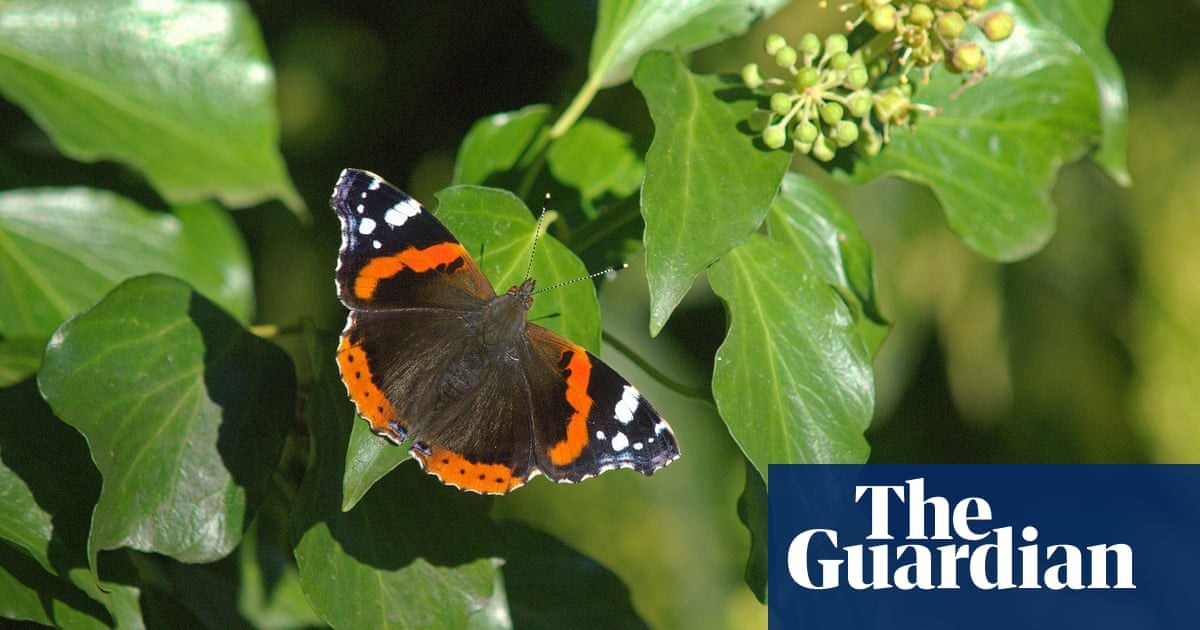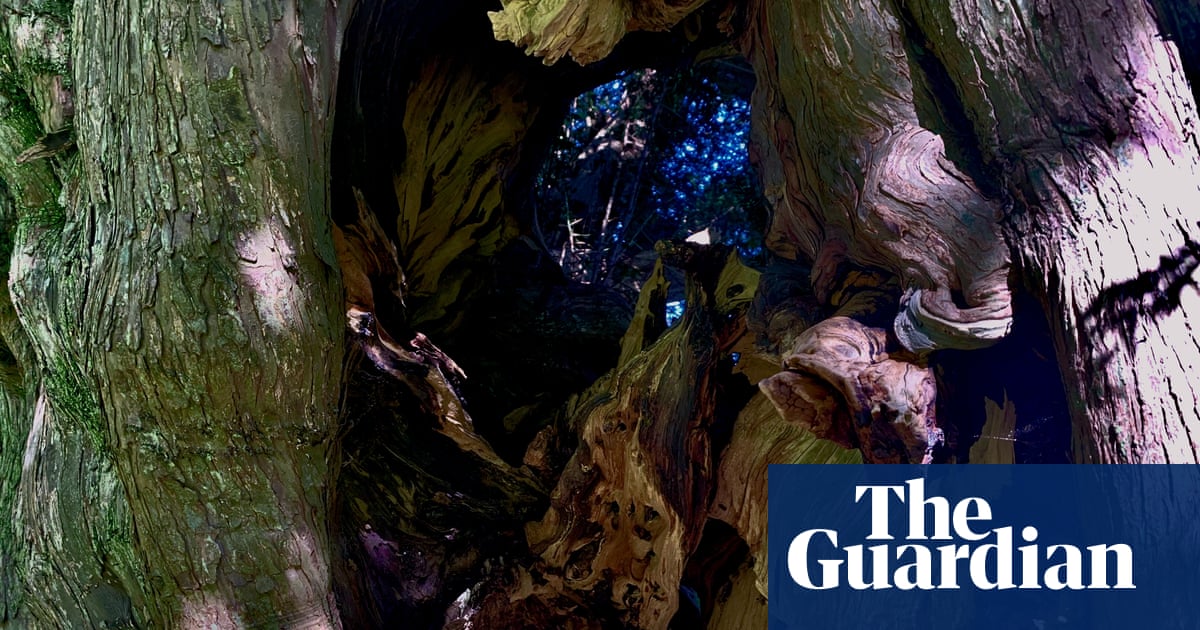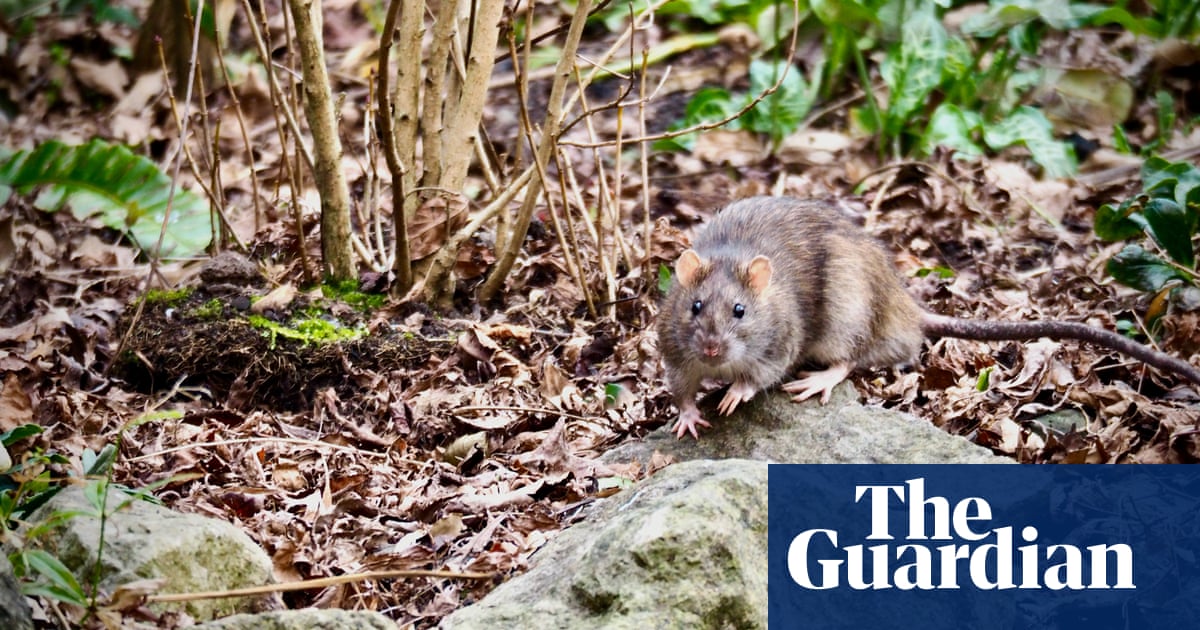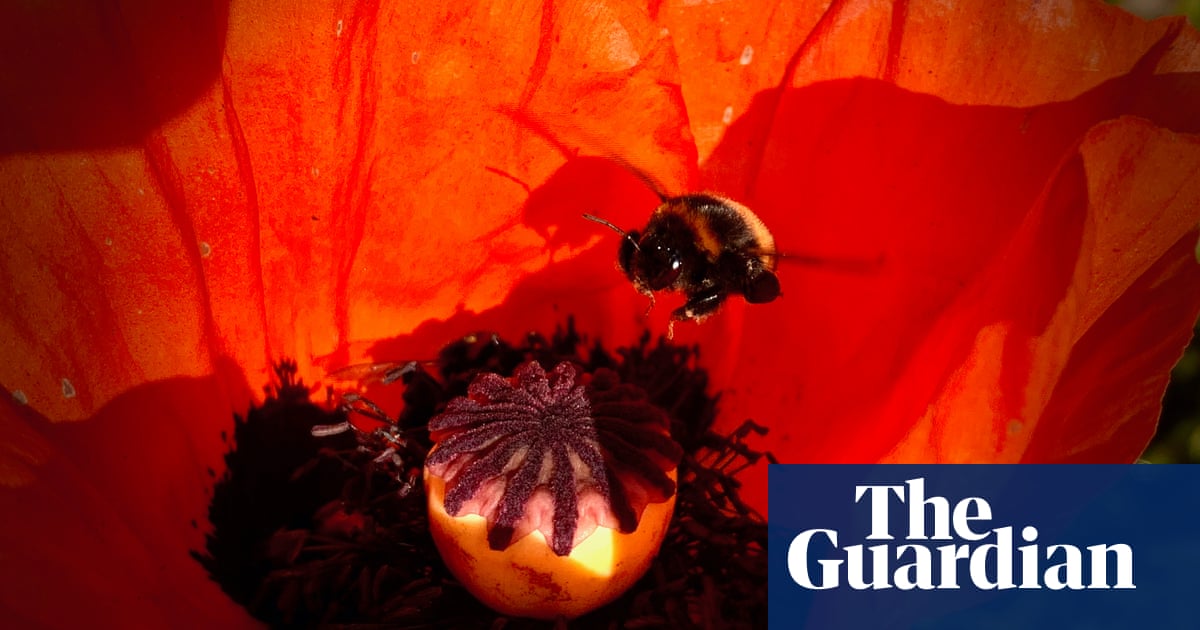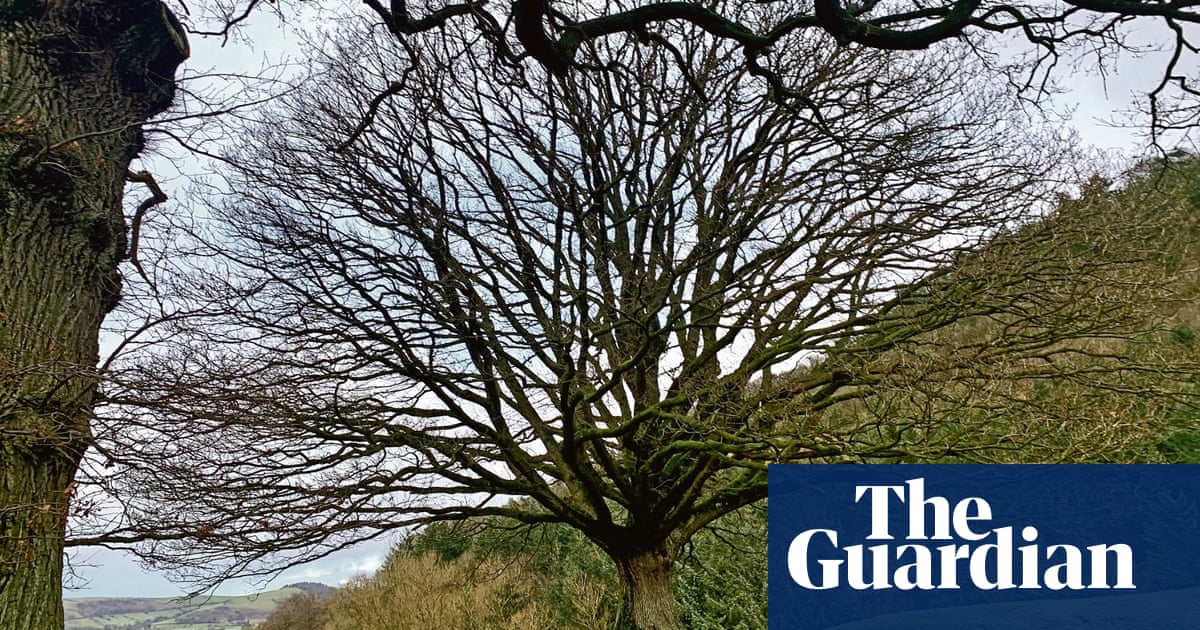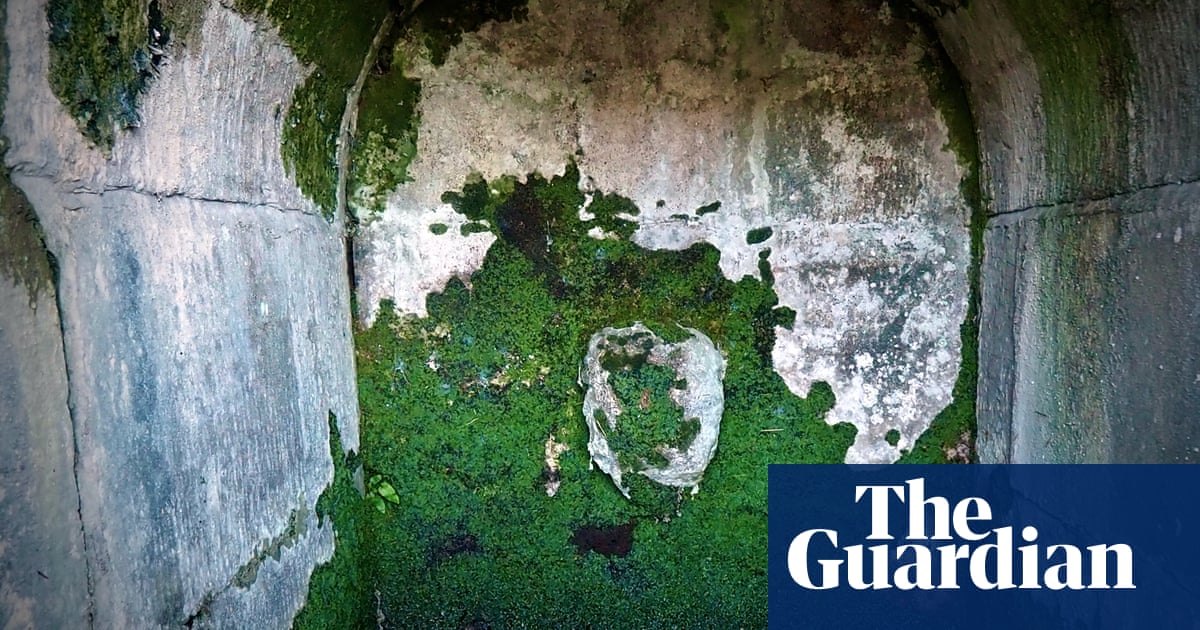
When another storm came strap-hanging on the jet stream, pouring Atlantic rain over sodden ground, ditches burst, rivers flooded and water from this well rose out of its tank, over the skin of liverworts and across a little patio of slabs laid in a 1989 heritage restoration project, whose plaque reads: Oswald’s Well. Legend states that, in the miraculous world of 642, the English King Oswald was killed in battle against the Welsh King Penda at the battle of Maserfield. An eagle lifted, flew, then dropped his arm at this site, whence a spring of water has since bubbled.
This is Maserfield in Oswestry, where the terrible battle was fought on school playing fields, open-plan lawns of 60s semis and bungalows, between dwarf conifers and trees reaching from a bloody seed bank underneath. Here, on a cold, January night, flowers of Prunus x subhirtella ‘Autumnalis’, the winter-flowering cherry, open from pink buds under streetlights. It is quiet; there’s someone with a dog, someone running, no sign of gore pouring under drain covers towards the well.
As the night sky clears and the moon grins like a cat, there are a few stars above Penda’s Mercian field, where the last pagan king brought his warbands and the Powys boys from across the border to kill Northumbrian king Oswald, chop him up according to ancient ritual, and hang his bits from trees in the little rosy cul‑de-sacs up Maserfield.
Birds still talk about the arm business: was it the Brythonic eagle, the Germanic raven or another of the guilds of excarnation of sacrificial flesh? The worm-pullers, seed-crackers and fat-ball nibblers on Maserfield bird tables are indifferent to human history and whether the battle happened here or somewhere else, or if there was a sacred spring here before one of them dropped Oswald’s arm on it. But they watch the sky, sing to it, then, when the bells of nearby St Oswald’s ring, they shut their beaks in clipped-hedge darkness. And the liverworts still grow on wet stones of the wellhead, though they are so much older. These strange plants, survivors in dark corners of catastrophe, are the inheritors of a 1,382-year-old wonder.




